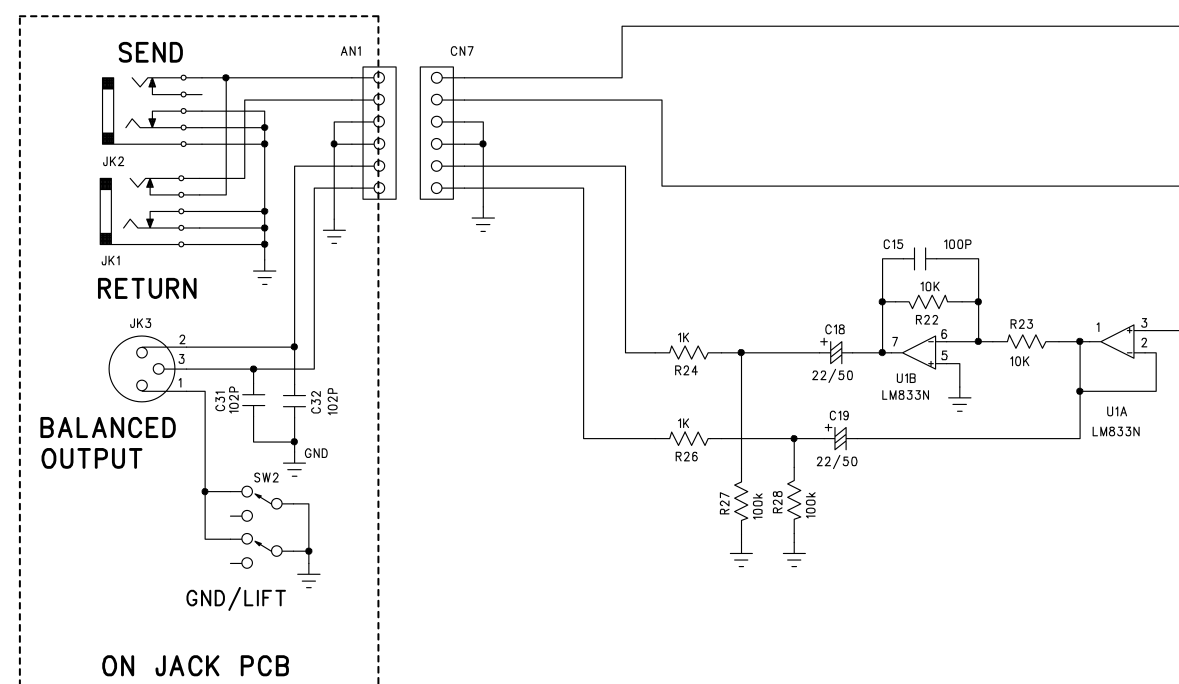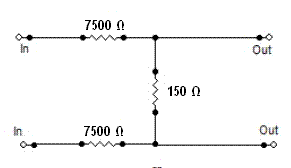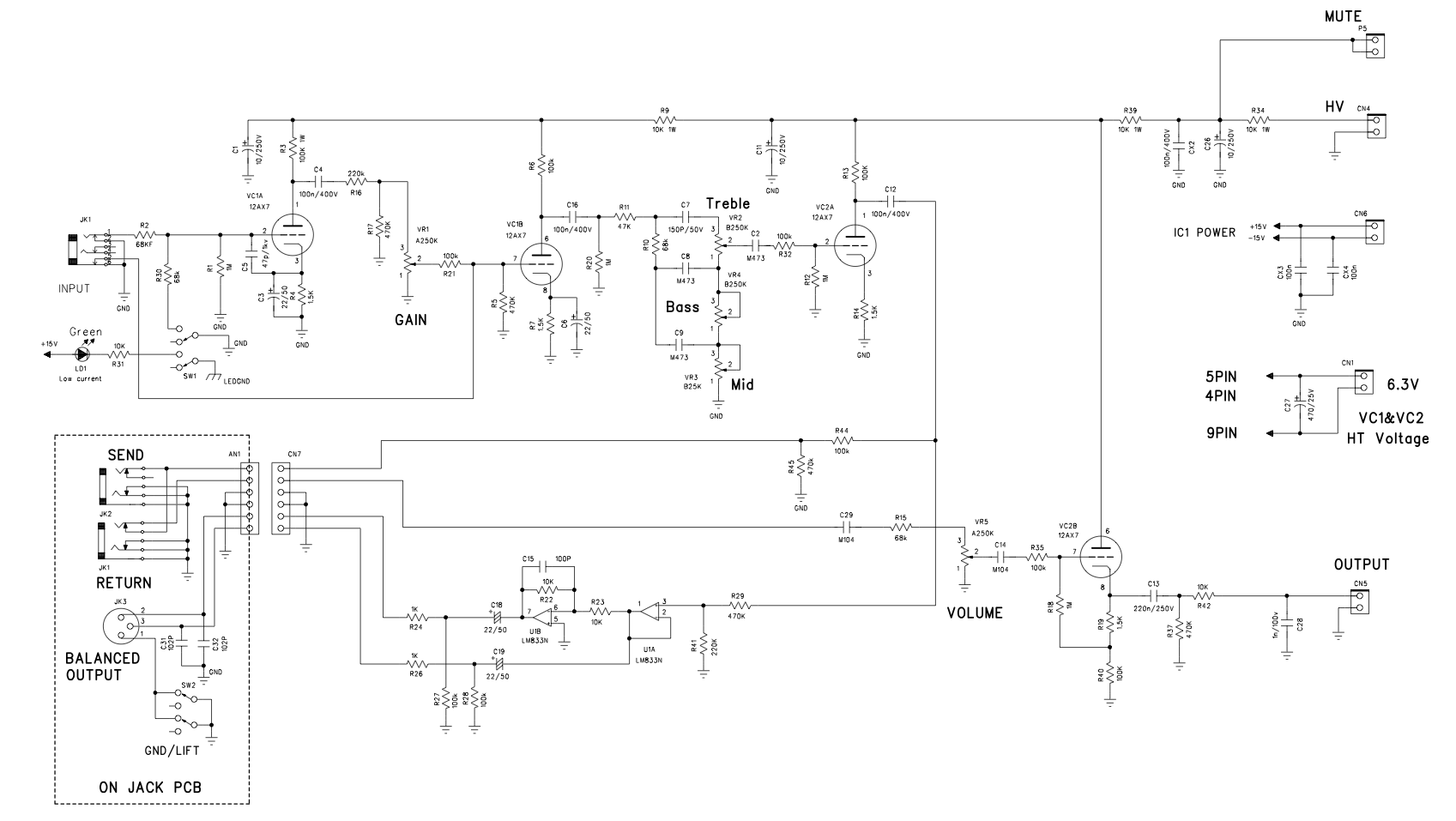Hello,
a friend of mine has a Terror Bass amplifier head.
The first models had the DI output at Line Level and not not at Mic Level.
It seems so many people complained the output was too hot and it was changed in later revisions.
My friend has the same problem when he uses this amp at concerts since most of the time the DI output will be connected to a Mic Input on the FOH console. (or its more convenient that way in Live Sound scenario)
He asked me to modify his amp to have a MIC Livel DI output (he prffers to have the amp modified than using and attenuator barrel)
Here is the schematic for the DI output:

I want to implement a 40dbs pad, as most Terror Bass users seems to happy with this level of attenuation

Can I implement the mod for the PAD this way?

thank you so much
a friend of mine has a Terror Bass amplifier head.
The first models had the DI output at Line Level and not not at Mic Level.
It seems so many people complained the output was too hot and it was changed in later revisions.
My friend has the same problem when he uses this amp at concerts since most of the time the DI output will be connected to a Mic Input on the FOH console. (or its more convenient that way in Live Sound scenario)
He asked me to modify his amp to have a MIC Livel DI output (he prffers to have the amp modified than using and attenuator barrel)
Here is the schematic for the DI output:

I want to implement a 40dbs pad, as most Terror Bass users seems to happy with this level of attenuation

Can I implement the mod for the PAD this way?

thank you so much

























![Electronics Soldering Iron Kit, [Upgraded] Soldering Iron 110V 90W LCD Digital Portable Soldering Kit 180-480℃(356-896℉), Welding Tool with ON/OFF Switch, Auto-sleep, Thermostatic Design](https://m.media-amazon.com/images/I/41gRDnlyfJS._SL500_.jpg)












